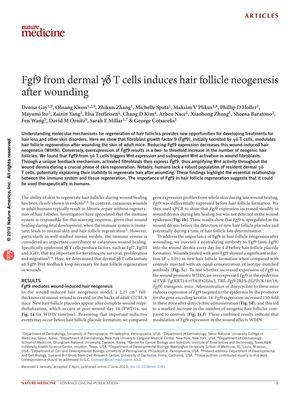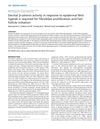Fgf9 From Dermal γδ T Cells Induces Hair Follicle Neogenesis After Wounding
June 2013
in “
Nature Medicine
”

TLDR A protein from certain immune cells is key for new hair growth after skin injury in mice.
In the 2013 study by Denise Gay et al., researchers found that fibroblast growth factor 9 (Fgf9), secreted by dermal γδ T cells, is crucial for hair follicle regeneration after skin wounding in mice. Lowering Fgf9 expression decreased hair neogenesis, while overexpression increased new hair follicles by two- to threefold. The study revealed a feedback loop between Fgf9 and Wnt expression in wound fibroblasts, essential for skin regeneration. The lack of similar dermal γδ T cells in humans may explain the poor hair regeneration after wounding in humans. The study, which used quantitative PCR analyses and transgenic mice models, suggests Fgf9's potential for therapeutic use in hair follicle regeneration. Experiments with sample sizes ranging from 6 to 50 mice provided a strong basis for these conclusions.






